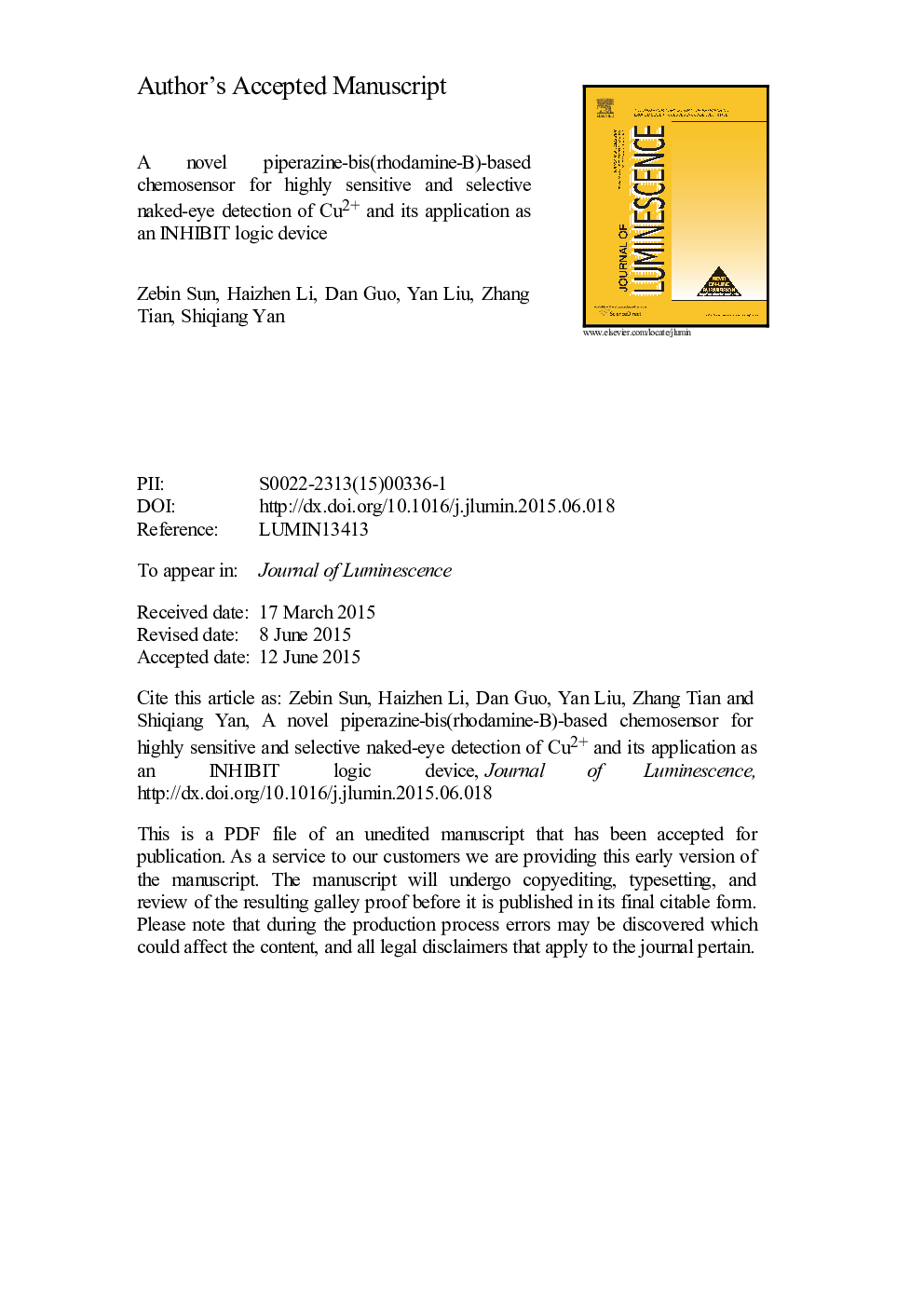| Article ID | Journal | Published Year | Pages | File Type |
|---|---|---|---|---|
| 5398790 | Journal of Luminescence | 2015 | 34 Pages |
Abstract
We report the design and synthesis of a new piperazine-bis(rhodamine-B) (RB-P-RB)-based indicator for selective detection of Cu2+ ion. Optical sensing behavior toward various metal ions including alkali, alkaline earth and transition metal ions (Na+, K+, Ba2+, Mg2+, Ca2+, Zn2+, Cd2+, Mn2+, Co2+, Ni2+, Pb2+, Cu2+, Hg2+, and Ag+) were investigated by UV-vis and fluorescence spectroscopy in ethassnol solution. The indicator showed highly selective and sensitive colorimetric and “turn-on” fluorescence enhancement responses toward Cu2+ ion owing to the ring-opening structure of the rhodamine spirolactam. The significant change from colorless to pink upon the addition of Cu2+ could make it a suitable “naked-eye” indicator for Cu2+. Furthermore, a possible ring-opening mechanism (off-on) of the rhodamine spirolactam induced by Cu2+ binding is supported by Job plot, ESI-mass, FT-IR, and 1H NMR. More significantly, the probe displayed highly selective Cu2+-amplified absorption in the presence of Cu2+ ions. Finally, using Cu2+ and EDTA as inputs and the fluorescence emission intensity as output, an INHIBIT logic gate can be constructed at the molecular level.
Related Topics
Physical Sciences and Engineering
Chemistry
Physical and Theoretical Chemistry
Authors
Zebin Sun, Haizhen Li, Dan Guo, Yan Liu, Zhang Tian, Shiqiang Yan,
